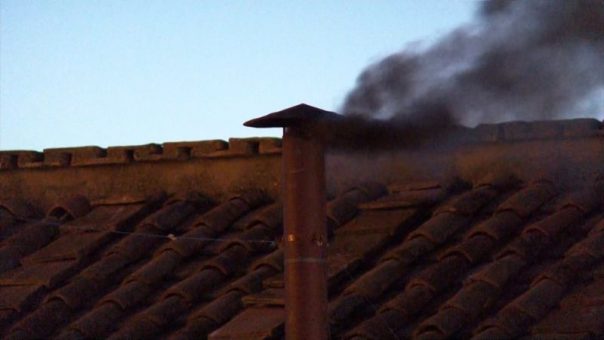World
No new Pope yet as first round of voting ends with black smoke

The much-anticipated selection of a new Pope hit a pause on Tuesday as the first round of voting by the College of Cardinals ended without a conclusive result.
Black smoke emerged from the chimney of the Sistine Chapel—an age-old symbol indicating that a new Pope has not yet been elected. This outcome means the cardinal electors will resume the sacred process today.
Before the 133 cardinal electors moved into the Conclave, a remark by 91-year-old Dean of the College of Cardinals, Giovanni Battista Re, saying “auguri e doppi,” which could mean either “congratulations twice” or “best wishes twice” to Vatican Secretary of State, Pietro Parolin – set tongues wagging that he is favoured to become the next Pontiff.
Sistine Chapel and history of Conclave
At 4:30 p.m. local time, 133 cardinals processed from the Vatican’s Pauline Chapel into the Sistine Chapel. After the papal master of ceremonies, Archbishop Diego Ravelli, declared extra omnes (“everyone out”), the doors of the chapel were sealed and conclave voting began.
It is in the famous Sistine Chapel that the election of the new pope will take place – and have done so since the 15th Century.
The last conclave, in 2013, elected Pope Francis after just five rounds of voting, making it one of the quickest decisions in modern times.
In earlier centuries, disagreements sometimes caused conclaves to stretch on for months.
After the voting has taken place, the faithful gathered in St Peter’s Square – and those watching around the world – will wait for the moment smoke comes out of the Sistine Chapel chimney.
Black smoke means more voting will take place tomorrow. White means we have a new pope.
Related News
The longest conclave ever went on from 1268 to 1271 – when Pope Gregory X was elected after an almost three-year process.
The shortest conclave lasted just 10 hours and ended with the election of Pope Julius II in 1503.
In modern times, the last few have all been done within two or three days.
Cardinal Re on the task before the electors
Yesterday, Dean of the College of Cardinals, Re, who said the funeral Mass for Pope Francis 11 days earlier, gave the homily at the service in St. Peter’s Basilica known as Pro Eligendo Pontifice (For the Election of the Pontiff). He weighed in on the two poles of unity and diversity, which in debates on the future of the church have come to represent the split between conservative and progressive views.
In his homily, Re said the readings issued “a strong call to maintain the unity of the church on the path traced out by Christ to the apostles,” recognizing the cardinals who want a new pope to counter the division — some say “confusion” — they believe Francis introduced by welcoming dissenting voices.
But Cardinal Re also admonished the traditionalists that the conclave must aspire to a “unity that does not mean uniformity, but a firm and profound communion in diversity, provided that full fidelity to the gospel is maintained.”
In a break from the last two Masses preceding the conclaves in 2005 and 2013, Re did not mention the previous pontiff by name in his homily, only mentioning Pope John Paul II’s comment on the cardinals’ responsibility to put the pontificate in “the right hands.”
Re instructed the cardinals to pray that they would be led to pick a pope, “who knows how best to awaken the consciences of all and the moral and spiritual energies in today’s society,” a nod to the cardinals’ discussions about evangelisation, as well as the church’s engagement on social issues, during the general congregations.


























